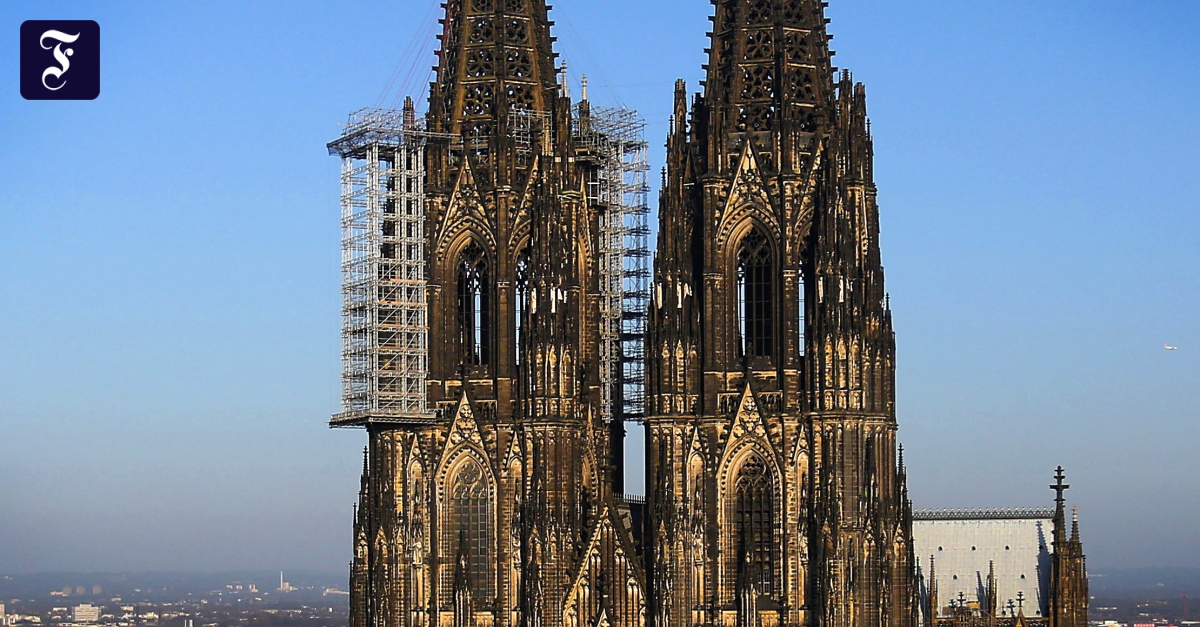TEvery day, thousands of tourists film Cologne Cathedral with cameras and smartphones. But no one has photographed the structure as often and in detail as the Monheim-based Northdocks. In April 2020, the digitization specialist began recording the facade of Germany’s most famous church with drones from all angles. Professionals carefully guided the plane at a distance of five to seven meters along walls, towers, peaks, ornaments and figures – sometimes to where no one had been for a century and a half. The goal of the exercise, which cost a six-figure euro sum: to produce a digital twin of the cathedral.
Silas Fox, Northdocks project manager, inspects the result using virtual reality glasses. Everyone who wears computer glasses thinks they are standing in front of the building at an astonishing height. Virtual reality gamers know this virtual reality in many ways, but it’s not a game here. The goal is to be able to spot even the smallest restoration work that will soon be established thanks to the high level of detail. Because Northdocks has collected more than 200,000 drone images in a 50 GB 3D model on behalf of the Cologne Cathedral construction work. With 25 billion polygons, the virtual twin of bits and bytes looks as real to the viewer as a real building made of stone.
A technology called 5G computing
Cologne Cathedral is an elegant demonstration object for the Northdocks. But the ideas go beyond the scenario of the restoration of the cathedral. Virtual reality should offer a lot: from training firefighters and rescuers to maintenance work on planes. However, there has been one problem so far: high-performance stationary computers were required for the massive amounts of data and their processing. Transferring over the cellular network for mobile employees was difficult or impossible in the past. “Digital twins collect a huge amount of data that needs to be passed on to the end user,” says Northdocks Director Fuchs. Interaction with the digital twin was highly correlated with a single location.
That must change now. Vodafone Mobile Group and Amazon AWS Cloud have agreed on a strategic collaboration of which they promise a great deal. 5-G edge computing is the name of the technology that seeks to combine the benefits of the new cellular standard and the cloud. “We are expanding our real-time network with real-time servers. The data is then processed directly in our network without any detours,” promised Hannes Ametsreiter, President of Vodafone Germany.
To this end, Vodafone has operated three of its so-called Multiple Access Terminal Computing (MEC) servers. Right on the edge of the cellular network, as it is called, in three 5G data centers in Berlin, Dortmund and Munich. So-called AWS Wavelength Services are integrated on these servers. Those who reserve them books – as in the cloud – external server services, but integrated into the cellular network.
Amazon promises ‘new opportunities in the cloud’
Amazon subsidiary AWS, the world’s largest cloud provider, introduced the technology in 2019. Thanks to collaborations with telecommunications companies such as SK Telecom, KDDI, and Verizon, it has been up and running in South Korea, Japan, and the United States for a few months. In Europe, Vodafone is progressing as an AWS partner in Great Britain and now in Germany. Questions about the capabilities of the “edge” technology are answered somewhat ambiguously, but the participants expect a lot from it. Sebastian Drech, Director of AWS, is sure: “This is the beginning of new possibilities in the cloud. We are bringing the cloud to wherever customers want to use it.” Ametsreiter speaks of a unique innovative push in mobile communications.
So what is possible? Enthusiasm for new technology still seems greater than the amount of real ideas, let alone implementation. They say most “use cases” are unpredictable today. Vodafone cites examples such as real-time data for holograms, augmented and virtual reality, and for robot control. And of course in future grid traffic, when vehicles warn each other of dangers over a cellular network: “In these situations, every millisecond counts.” AWS names data-intensive applications such as HD Live Video Streaming or Medical Diagnostics.
Regarding digital twins, Silas Fuchs has a specific idea of why it is no longer possible today without 5G and “real-time computers” in the cellular network. With VR glasses, the deviation between one’s movements and the delayed computer image should be very small. “If I have a headset and the image follows it, I immediately feel sick. The minimally high response time ensures that movement and image are not synchronized.” And that’s enough “to break even experienced VR users like him right away.” 15 milliseconds is the maximum – this can only be delivered according to the fast cellular standard.

“Certified gamer. Problem solver. Internet enthusiast. Twitter scholar. Infuriatingly humble alcohol geek. Tv guru.”






